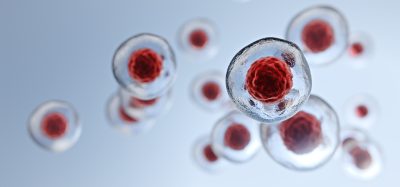How nucleolar stress accelerates aging in mice
Posted: 9 April 2024 | Dr Fernández-Capetillo (CNIO), Ellen Capon (Drug Target Review) | No comments yet
Dr Fernández-Capetillo shares his insights from a recent study conducted at the CNIO, elucidating how the expression of (PR)arginine-rich peptides affects ribosomal protein translation and accumulation, and how accelerated aging can be alleviated.


How has nucleolar stress (NS) been linked to age-related diseases, and what approach did researchers use to investigate its toxicity?
The nucleolus (and nucleolar stress) had been previously linked to aging and age-related diseases such as cancer or degeneration. Several studies had shown nucleolar alterations in these diseases, and even correlations between nucleolar activity and lifespan. However, our study was first to show that inducing nucleolar stress in an adult mammal accelerates aging. Our approach to investigate the toxicity driven by nucleolar stress was to induce it with certain arginine-rich peptides, present in patients of ALS, which were known to accumulate at nucleoli and cause this type of stress.
What effect does the expression of (PR)n arginine-rich peptides have on translation and the accumulation of ribosomal proteins in cells?
(PR)n peptides had been previously known to be associated with lower translation rates. However, the mechanism of this observation was not fully understood. In a previous study, we showed that these peptides decorate all cellular RNAs and thus impair the binding of RNA-binding proteins to RNA. Given that ribosomes are formed by RNAs and proteins, we speculated that arginine-rich peptides should impair their assembly, leading to an accumulation of “orphan” ribosomal proteins that cannot form a ribosome. And this is precisely what is seen.
How do (PR)n-resistant cells differ in terms of ribosomal protein synthesis rates compared to cells sensitive to (PR)n?
(PR)n-resistant cells have constitutively lower levels of translation. More importantly, they have reduced rates of ribosome biogenesis, which is opposite to the problem caused by the (PR)-peptides; namely, an accumulation of ribosomal proteins.
Biomarkers aren’t just supporting drug discovery – they’re driving it
FREE market report
From smarter trials to faster insights, this report unpacks the science, strategy and real-world impact behind the next generation of precision therapies.
What you’ll unlock:
- How biomarkers are guiding dose selection and early efficacy decisions in complex trials
- Why multi-omics, liquid biopsy and digital tools are redefining the discovery process
- What makes lab data regulatory-ready and why alignment matters from day one
Explore how biomarkers are shaping early drug development
Access the full report – it’s free!
What interventions were used to alleviate the toxicity induced by (PR)n in vitro, and what was the observed effect?
In vitro, we show that reducing ribosome biogenesis rates either by inhibiting mTOR or by depleting the MYC oncogene, reduces the toxicity of (PR)n peptides in all tested models, including neurons.
In mouse models, how does the systemic expression of (PR)97 affect NS and aging, and how is this effect alleviated?
Systemic (PR)n expression, in vivo, drives a similar accumulation of NS and of ribosomal proteins. Moreover, this is associated to a hyper-activation of the mTOR signalling pathway, which is a major driver of ageing. Consequently, the accelerated aging can be alleviated by mTOR inhibition with rapamycin.
What is the common outcome observed in cells when they are exposed to chemical or genetic perturbations that induce NS, and what does this imply about the role of orphan ribosomal proteins?
The common outcome of cells experiencing NS is, precisely, that all of them present a generalised accumulation of orphan ribosomal proteins. Because ribosomal proteins are among the most frequent ones in living cells, their accumulation collapses several essential pathways from the cell such those dedicating to clear dysfunctional proteins (proteasome) or facilitating their proper structural folding (chaperones).
The full study is published in Molecular Cell.
About the author


Dr Óscar Fernández-Capetillo, Vice Director of CNIO & Director of CNIO’s Molecular Oncology Programme & Professor at the Karolinska Institute.
Oscar Fernandez-Capetillo did his PhD in the University of The Basque Country working with mouse models of autoimmunity with Dr Ana Zubiaga. For his postdoctoral stay he joined the group of André Nussenzweig, where he started to work on DNA repair, particularly focusing on the role of histone H2AX.
In 2005, he joined CNIO to lead the Genomic Instability Group where he has been ever since. Initial works from the lab concentrated on exploring the role of replicative stress in cancer and ageing, for which the group combined cell biology, mouse models and drug development projects. Among other discoveries, the group developed inhibitors of the ATR kinase and showed their potential for cancer therapy. These compounds were later licensed to the pharmaceutical industry for clinical development. Today, several companies have ATR inhibitors at various stages of clinical development, which to a significant extent was influenced by early works from the laboratory. More recently, the group has expanded to other areas such as mechanisms of drug resistance and neurodegenerative diseases.
Oscar’s scientific career has been recognised by multiple awards and recognitions, national and internationally.
Since 2015 Oscar is also the Vice Director of CNIO as well as Director of its Molecular Oncology Programme, and professor at the Karolinska Institute in Sweden.
Related topics
In Vivo, Protein, RNAs, Toxicology
Related conditions
Aging
Related organisations
Spanish National Cancer Research Center (CNIO)








